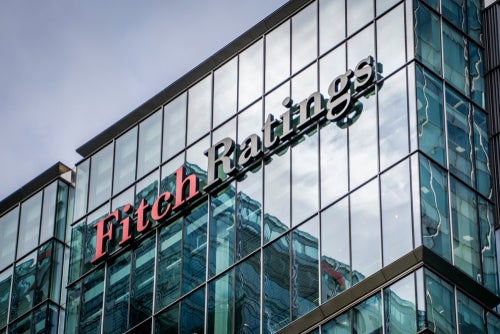‘Cash for clunkers’ a hit for some,
Ford holds on as top financier, subprime lenders on the up
SCRAPPAGE
SCHEME
Lenders cash in on
clunkers
With ‘Cash for Clunkers’, lenders had their cake and ate it, too.
The month-long government-sponsored programme, officially called
the Car Allowance Rebate System (CARS), effectively bolstered loan
volume with high-credit-quality borrowers.

Though lenders couldn’t quantify the amount of
business directly attributable to C4C – because applications
weren’t labelled as such or because they had other incentives in
place – they noticed increased volume, higher borrower credit
scores, lower loan-to-value ratios, and better approval rates
during the 27 July to 24 August period.
How well do you really know your competitors?
Access the most comprehensive Company Profiles on the market, powered by GlobalData. Save hours of research. Gain competitive edge.

Thank you!
Your download email will arrive shortly
Not ready to buy yet? Download a free sample
We are confident about the unique quality of our Company Profiles. However, we want you to make the most beneficial decision for your business, so we offer a free sample that you can download by submitting the below form
By GlobalDataNissan Motor Acceptance, for one, noted a “spike”
in loan volume, said president and CEO Steve Lambert, and the
manufacturer built in extra inventory in anticipation of the
increased sales.
Chase Auto Finance, too, saw a “significant
increase” in application volume related to CARS, said spokeswoman
Mary Kay Bean.
“The credit profile was stronger than expected, and
borrowers were asking for lower financed amounts,” she added.
Another dynamic that lenders noticed was that
buyers were older than average, which contributed to the higher
credit scores.
“As a whole, buyers seemed to be financially
prudent individuals who saw a great opportunity in C4C,” said GMAC
spokesman Mike Stoller.
Some captives, like Hyundai Motor Finance, noted a
higher percentage than normal of cash buyers. Hyundai Finance had a
“great month” in terms of sales and finance contracts for Hyundai
and Kia, said Mike Buckingham, the financier’s president and chief
executive.
Also, some lenders offered floorplan-assistance
programmes to help dealers maintain cash flow while the Department
of Transportation processed their C4C paperwork. For instance,
Toyota Financial developed the CARS Wholesale Programme, a line of
credit that gave dealers in good standing a preapproved credit line
for $3,500 or $4,500 (£2,100 or £2,700) per vehicle, at the same
interest rate as TFS’s normal floorplan line.
“Originally it was for 30 days but we extended it
to 60,” Leach said.
For the most part, the programme was adopted by
smaller dealers “for whom cash flow is an issue”, Leach added.
FINANCE HOUSE RANKINGS
Ford Credit keeps finance crown
The combination of tight credit
conditions and plunging vehicle sales brought on by deflated
consumer confidence prompted a 7.6 percent decline in total
outstandings among the nation’s top 100 financiers. Overall, total
outstandings fell to $767.6 billion (£470 billion) in 2008,
according to the newly-released annual Auto Finance Big
Wheels ranking of the top car lenders and lessors in the
nation (www.bigwheelsdata.com).
In all, nearly half of the nation’s top 100
financiers reduced their portfolios last year.
Ford Motor Credit shrank its portfolio 14.5 percent
in 2008. Nonetheless, the captive retained first place among
financiers, with a $88.2 billion portfolio at year-end 2008, down
from $103.1 billion at year-end 2007. GMAC, whose portfolio
declined 23.7 percent last year, held onto its second-place rank
with $74 billion of loans and leases.
Toyota Motor Credit, meanwhile, inched closer to
its two higher-ranked competitors, growing its portfolio 7.3
percent to $65.6 billion. Wachovia Dealer Services, acquired by
Wells Fargo & Co at year-end 2008, and Chrysler Financial
rounded out the top five.
Credit unions grew their share of the market place
to 6 percent, compared with 5 percent in 2007 and 2006. Banks also
captured another point of marketshare in 2008, leaving the captives
with 55 percent. Independent finance companies, largely nonprime
players, accounted for the remaining 3 percent.
Overall, the average portfolio size was $7.7
billion (£4.7 billion); the median was $1.2 billion (£730 million).
Among credit unions, the average portfolio size was $914.6
million.
SUBPRIME FINANCE
Subprime lenders eye expansion
After more than a year of reining in risk
and shrinking originations, subprime lenders have set their sights
on expansion.
“Our organisation is planning for growth [over the
next one to three years],” said Mike Kane, senior vice-president of
the client services group for CitiFinancial Auto.
The lender is “sized today to where it was 10 years
ago”, Kane added. In the past 18 months, the company has “peeled
back to what our core was before we had that explosive growth,” he
added.
AmeriCredit, too, has started to hire again, after
more than a year of trimming staff. The lender is currently a
fraction of its former self, after capital constraints forced it to
slash origination volume last year.
“We really pulled back hard, and managed to our
cash position,” said Paul Gillespie, AmeriCredit’s head of national
sales and credit operations. Now the company is looking to grow
originations and hire people for sales and credit positions.
Ken Dundon, Santander Consumer USA’s senior
vice-president of originations. Dundon gauges the industry’s
improvement, in part, by the slowdown in dealerships closing up
shop.
“I get a list every day of dealers going out of
business,” Dundon said. “Now we are not seeing 10 a day, 20 a day,
or 30 a day. We see maybe one or two a week.”
Some lenders have boosted their focus on
payment-to-income ratios.
“Payment-to-income is the most critical measure in
the industry,” Kane said.
CitiFinancial Auto’s average is in the 8 percent to
10 percent range.
AmeriCredit, too, has bolstered reliance on PTI as
an indicator of risk.
“Once you get north of 12-14 percent PTI, credit
deteriorates rapidly,” Gillespie said.







